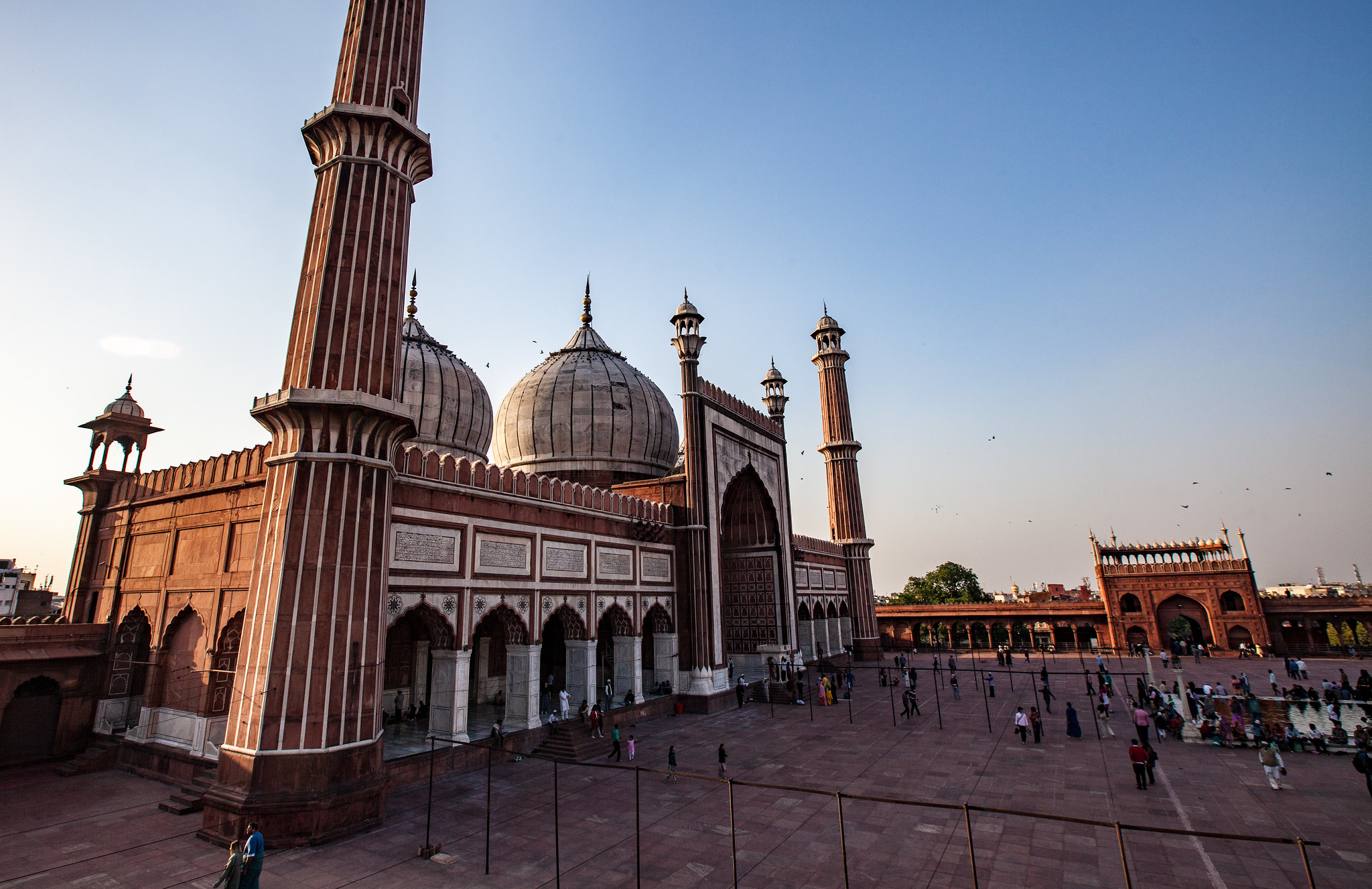Jama Masjid, also known as Masjid-i Jahān-Numā, is one of the largest mosques in India and a prominent architectural landmark in Old Delhi. Commissioned by Mughal Emperor Shah Jahan in 1644, it was completed in 1656 after six years of construction. The mosque’s name translates to “Friday Mosque” in English, reflecting its significance as a gathering place for communal Friday prayers. Built with red sandstone and white marble, the mosque features three grand gates, four towers, and two 40-meter-high minarets. Its spacious courtyard can accommodate up to 25,000 worshippers. Jama Masjid stands as a testament to Mughal architecture and remains an important religious and cultural site in India’s capital city.
Jama Masjid, the grand mosque of Old Delhi, stands as a testament to the architectural prowess of the Mughal era. This magnificent structure, commissioned by Emperor Shah Jahan in the 17th century, continues to captivate visitors with its intricate design and sheer scale. As one approaches the mosque, the first thing that catches the eye is its imposing facade, featuring three massive gates that beckon worshippers and tourists alike.
The main entrance, known as Gate No. 3, is a sight to behold with its towering arches and intricate carvings. As you climb the steep steps, you can’t help but feel a sense of anticipation building up. Once inside, the vast courtyard unfolds before you, capable of accommodating up to 25,000 devotees during prayer times. The expansive space is paved with red sandstone and white marble, creating a striking contrast that is characteristic of Mughal architecture.
At the heart of the courtyard lies a large water tank, used for ablutions before prayer. This practical feature also serves an aesthetic purpose, reflecting the mosque’s stunning architecture and adding to its overall grandeur. Surrounding the courtyard are colonnaded cloisters, providing shelter from the elements and offering a serene space for contemplation.
The prayer hall, situated on the western side of the courtyard, is the focal point of the mosque. Its facade is adorned with eleven arched entrances, each intricately decorated with calligraphy and geometric patterns. The central arch, larger and more ornate than the others, draws the eye and serves as the main entrance to the prayer hall.
Inside the prayer hall, the ceiling soars to impressive heights, supported by numerous pillars and arches. The play of light and shadow created by the sunlight filtering through the latticed windows adds to the ethereal atmosphere. The mihrab, a niche in the western wall indicating the direction of Mecca, is beautifully decorated with inlaid stones and calligraphy, serving as a focal point for worshippers.
One of the most striking features of Jama Masjid is its pair of minarets, rising 40 meters into the sky. These slender towers, constructed of red sandstone and white marble, offer panoramic views of Old Delhi to those brave enough to climb their narrow staircases. From the top, one can truly appreciate the mosque’s strategic location and its dominance over the surrounding cityscape.
The use of materials in Jama Masjid is worth noting, as it exemplifies the Mughal style of blending different elements to create a harmonious whole. The red sandstone, sourced from local quarries, forms the main structure, while white marble accents add elegance and contrast. The judicious use of these materials not only enhances the aesthetic appeal but also helps in keeping the interiors cool during the scorching Delhi summers.
As you explore the mosque, you’ll notice the intricate details that make it a true masterpiece. From the delicate floral motifs carved into the stone to the precise geometric patterns adorning the walls, every element has been carefully crafted to create a sense of beauty and harmony.
Jama Masjid is not just a place of worship; it’s a living museum that offers a glimpse into the rich cultural heritage of India. As you stand in its vast courtyard, surrounded by centuries of history, you can’t help but feel a sense of awe at the skill and vision of those who created this architectural marvel. Whether you’re a history buff, an architecture enthusiast, or simply a curious traveler, Jama Masjid is sure to leave a lasting impression, inviting you to explore and appreciate the intricate details that make it one of Delhi’s most treasured landmarks.
Jama Masjid stands as a magnificent testament to Mughal architecture and Islamic heritage in India. Built in the 17th century by Emperor Shah Jahan, this grand mosque continues to be a significant religious and cultural landmark in Old Delhi. Its impressive scale, intricate designs, and historical importance attract both worshippers and tourists from around the world. The mosque’s enduring presence serves as a reminder of India’s rich cultural tapestry and the lasting impact of Mughal rule on the country’s architectural landscape. As a symbol of faith and artistic achievement, Jama Masjid remains an integral part of Delhi’s identity and a source of pride for the nation.

